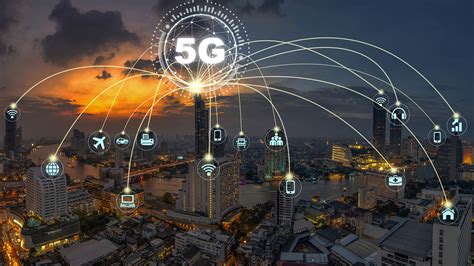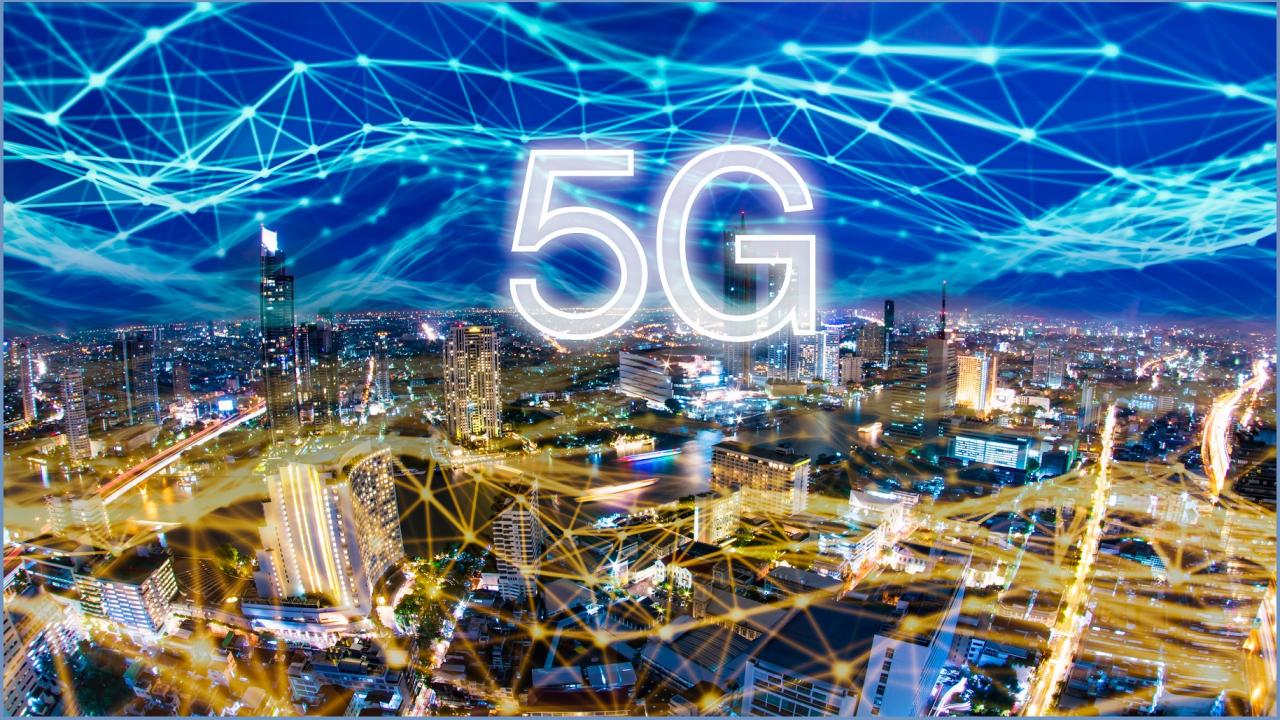The advent of 5G technology represents more than just an incremental upgrade in cellular communication; it’s a monumental leap poised to fundamentally reshape the entire global digital infrastructure. While much public discourse centers on faster mobile speeds and enhanced connectivity for end-users, the true revolutionary potential of 5G lies in its profound impact on the underlying network backbones—the high-capacity data transmission lines and infrastructure that form the very foundation of the internet and telecommunications. This deep transformation of network core and transport layers is crucial for enabling the ultra-low latency, massive connectivity, and unprecedented bandwidth that 5G promises. For telecommunication companies, infrastructure providers, and content creators alike, understanding these intricate shifts is paramount. This knowledge is not just academic; it’s vital for strategic planning, investment decisions, and, for content publishers, a key to generating high Google AdSense revenue by providing authoritative, in-depth information on a rapidly evolving and high-value topic. This comprehensive article will dissect the multifaceted ways 5G is redefining network backbones, explore the technologies driving these changes, and examine the challenges and opportunities that lie ahead.
The Core Demands of 5G Technology
To fully grasp 5G’s impact on network backbones, one must first appreciate the stringent technical requirements that differentiate it from previous generations like 4G LTE. 5G isn’t just about speed; it’s about a holistic improvement across several critical performance metrics.
A. Enhanced Mobile Broadband (eMBB): This addresses the need for significantly higher data speeds and capacities, supporting applications like 4K/8K video streaming, virtual reality (VR), and augmented reality (AR) experiences. This demands throughputs in the multi-gigabit per second range, pushing current backbones to their limits.
B. Ultra-Reliable Low-Latency Communication (URLLC): This is perhaps 5G’s most transformative capability. URLLC requires end-to-end latencies as low as 1 millisecond (ms), crucial for mission-critical applications such as autonomous vehicles, remote surgery, industrial automation, and haptic internet. Such stringent latency targets necessitate radical changes in network architecture, pushing computation closer to the edge.
C. Massive Machine-Type Communications (mMTC): Designed to connect a vast number of devices simultaneously, mMTC supports the burgeoning Internet of Things (IoT) ecosystem, from smart city sensors to agricultural monitoring. This requires the backbone to handle an exponential increase in connection density, potentially millions of devices per square kilometer, each generating small, intermittent data packets.
These three pillars collectively impose unprecedented demands on the entire network infrastructure, particularly the backbone. Legacy architectures, optimized for human-to-human communication with higher latency tolerances and fewer simultaneous connections, are simply insufficient.
Key Architectural Shifts in Network Backbones Driven by 5G
To meet 5G’s demanding requirements, network backbones are undergoing fundamental architectural transformations. These shifts are characterized by increased decentralization, virtualization, and programmability.
A. Network Slicing: One of 5G’s most revolutionary features, network slicing allows mobile operators to create multiple isolated, virtualized end-to-end logical networks on top of a common physical infrastructure. Each “slice” can be customized with specific performance characteristics (e.g., guaranteed bandwidth, ultra-low latency, high connection density) tailored for different use cases (e.g., one slice for autonomous cars, another for smart energy grids, and a third for consumer broadband). 1. Benefits: This enables service providers to offer highly differentiated services, optimize resource allocation, and support diverse business models. 2. Backbone Impact: The backbone must support dynamic allocation of resources to these slices, ensuring isolation and performance guarantees across the entire transport network. This necessitates advanced routing, quality of service (QoS) mechanisms, and programmability at every layer.
B. Mobile Edge Computing (MEC) / Multi-access Edge Computing: To achieve ultra-low latency, computation and data processing must move from centralized cloud data centers closer to the end-user or device, at the “edge” of the network. MEC brings cloud capabilities, including compute, storage, and networking, to the access network (e.g., at base stations or local data centers). 1. Benefits: Reduces latency by minimizing round-trip time to the core, decreases backhaul traffic, and enables real-time applications. 2. Backbone Impact: The backbone needs to interconnect these distributed MEC nodes efficiently. This creates a more distributed and complex topology, requiring sophisticated routing, load balancing, and traffic steering capabilities to direct data to the nearest MEC instance and ensure seamless service continuity as users move.
C. Software-Defined Networking (SDN) and Network Function Virtualization (NFV): These technologies are foundational to 5G’s flexibility and efficiency. 1. SDN: Decouples the network’s control plane (which makes routing decisions) from the data plane (which forwards traffic). This centralizes network intelligence, allowing operators to program and manage the network from a single point, enabling dynamic resource allocation and rapid service deployment. 2. NFV: Replaces dedicated hardware appliances (like routers, firewalls, load balancers) with software applications running on standard commercial off-the-shelf (COTS) servers. This allows network functions to be deployed, scaled, and managed virtually, reducing CapEx and OpEx. 3. Backbone Impact: SDN and NFV are critical enablers for network slicing and MEC. They allow the backbone to be dynamically reconfigured, resources to be provisioned on-demand, and traffic flows to be optimized programmatically, supporting the varying demands of 5G services with unprecedented agility. The backbone’s routing protocols and forwarding mechanisms must become SDN-aware.
D. Fronthaul and Midhaul Evolution: In previous generations, the connection between the base station (Radio Unit – RU) and the baseband unit (Baseband Unit – BBU) was known as fronthaul. With 5G’s disaggregated RAN (Radio Access Network) architecture (splitting the BBU into Centralized Unit – CU and Distributed Unit – DU), new interfaces (midhaul) emerge. 1. Benefits: Offers greater flexibility in deployment and resource pooling. 2. Backbone Impact: The transport network (backbone) needs to handle these new, often highly stringent, fronthaul and midhaul traffic requirements, characterized by very low latency and tight synchronization, potentially leveraging technologies like eCPRI (enhanced Common Public Radio Interface) over Ethernet. This drives the need for high-capacity, low-latency optical fiber networks to connect RUs, DUs, and CUs.
E. Increased Fiber Optic Deployment and Densification: To handle the massive increase in bandwidth and support the densification of 5G small cells, a dramatic expansion of fiber optic infrastructure is absolutely essential. 1. Benefits: Fiber offers unmatched bandwidth, low latency, and immunity to electromagnetic interference. 2. Backbone Impact: The backbone itself, and its extensions into the access network (e.g., Fiber to the Cell/Site – FTTC/F), must become much denser and more robust. This involves significant investment in laying new fiber, upgrading existing optical networks, and deploying advanced optical technologies like Wavelength Division Multiplexing (WDM) and future flexible grid ROADMs (Reconfigurable Optical Add-Drop Multiplexers) to maximize fiber utilization.
Technologies Enabling the 5G Backbone Transformation
Several cutting-edge technologies are pivotal in allowing network backbones to meet 5G’s rigorous demands.
A. Advanced Optical Networking (DWDM/ROADM): Dense Wavelength Division Multiplexing (DWDM) allows multiple data streams to be transmitted simultaneously over a single optical fiber using different wavelengths of light, dramatically increasing capacity. Reconfigurable Optical Add-Drop Multiplexers (ROADMs) provide flexibility to dynamically route wavelengths without manual intervention, crucial for SDN and network slicing. 1. Role: These technologies form the high-capacity core of the backbone, enabling the transport of vast amounts of data between data centers, edge nodes, and central offices with minimal latency.
B. Segment Routing (SR) and SRv6: Segment Routing simplifies network forwarding by encoding routing instructions as “segments” in the packet header, rather than relying on complex path computation at each node. SRv6 extends this to IPv6, making it natively compatible with future internet protocols and enabling end-to-end network slicing. 1. Role: SR provides the agile, programmable routing necessary for 5G’s dynamic services, simplifying traffic engineering, fast rerouting, and efficient resource allocation across the backbone.
C. Time-Sensitive Networking (TSN): While primarily an Ethernet standard for industrial control systems, TSN is increasingly being considered for 5G fronthaul/midhaul and critical enterprise use cases requiring extremely precise timing and low-latency deterministic communication over standard Ethernet. 1. Role: TSN can provide the strict synchronization and guaranteed low latency required for URLLC services within parts of the 5G transport network, bridging the gap between traditional Ethernet and hard real-time requirements.
D. Quantum Cryptography and Post-Quantum Cryptography: As data volumes increase and networks become more distributed, security becomes paramount. Quantum computing poses a future threat to current encryption methods. 1. Role: Quantum Cryptography (using quantum mechanics for secure key distribution) and Post-Quantum Cryptography (new algorithms resistant to quantum attacks) are being explored to secure the sensitive data traversing 5G backbones, ensuring long-term data integrity and privacy.
E. Orchestration and Automation Platforms: With the complexity introduced by network slicing, MEC, SDN, and NFV, manual configuration is impossible. Automated orchestration platforms are essential for provisioning, managing, and optimizing these dynamic 5G networks. 1. Role: These platforms leverage AI/ML to predict traffic patterns, automatically allocate resources to network slices, perform self-healing, and optimize network performance in real-time, reducing operational costs and ensuring service level agreements (SLAs).
Challenges in 5G Backbone Transformation
Despite the immense opportunities, the transformation of network backbones for 5G presents significant challenges.
A. Massive Investment Requirement: The densification of fiber, deployment of MEC, and upgrades to core network hardware and software represent colossal capital expenditures for operators. The return on investment (ROI) models for many novel 5G services are still evolving.
B. Network Complexity: The introduction of SDN, NFV, network slicing, and MEC dramatically increases the complexity of network design, deployment, and operation. Managing these highly distributed and virtualized environments requires new skills, tools, and operational paradigms.
C. Security Concerns: A more distributed and virtualized network architecture presents a larger attack surface. Securing MEC nodes, network slices, and the vast number of new IoT devices connected via 5G requires advanced, real-time threat detection and mitigation capabilities.
D. Interoperability and Standardization: Ensuring seamless interoperability between different vendors’ SDN controllers, NFV infrastructure, and various 5G components is crucial. While 3GPP and other standards bodies are working diligently, achieving global, multi-vendor interoperability at this scale is a complex undertaking.
E. Talent Gap: There’s a significant shortage of skilled professionals capable of designing, deploying, and managing complex, software-driven 5G networks. This requires retraining existing workforces and attracting new talent with expertise in areas like cloud computing, virtualization, and AI/ML.
F. Energy Consumption: The densification of infrastructure, particularly with small cells and MEC, can lead to increased energy consumption. Developing energy-efficient hardware and optimizing network operations through AI/ML are critical for sustainable 5G deployment.
Opportunities Arising from a Transformed Backbone

The investment and challenges associated with 5G backbone transformation unlock unprecedented opportunities across various sectors.
A. New Revenue Streams for Operators: Network slicing enables operators to offer highly differentiated, guaranteed-performance services to enterprises for industrial IoT, smart cities, and mission-critical applications, moving beyond simple consumer broadband.
B. Enabling Industry 4.0: Ultra-low latency and high reliability are essential for smart factories, robotics, remote control of machinery, and real-time analytics in industrial settings, driving new levels of automation and efficiency.
C. Revolutionizing Transportation: 5G’s URLLC is critical for vehicle-to-everything (V2X) communication, enabling autonomous driving, intelligent traffic management, and enhanced road safety.
D. Advancing Healthcare: Remote surgery, real-time patient monitoring via IoT devices, and telemedicine with high-definition video become more feasible and reliable, expanding access to specialized care.
E. Smart Cities and Public Safety: Massive IoT connectivity facilitates smart lighting, waste management, environmental monitoring, and enhanced communication for emergency services, making cities more efficient and safer.
F. Enhanced Immersive Experiences: eMBB capabilities support widespread adoption of high-fidelity VR/AR, cloud gaming, and holographic communication, transforming entertainment, education, and collaboration.
G. Enterprise Digital Transformation: Businesses can leverage private 5G networks with dedicated slices on the public backbone for their specific needs, enhancing operational efficiency, security, and data management.
The Future of Network Backbones: Beyond 5G
The evolution sparked by 5G is not an endpoint but a stepping stone towards even more advanced network capabilities.
A. Towards 6G and Beyond: Future generations will likely push the boundaries of extreme sensing, AI-native air interfaces, and integrated communication-sensing-computing. This will demand backbones capable of handling truly astronomical data volumes, even lower latencies (sub-millisecond), and pervasive edge intelligence.
B. Quantum Networking: As quantum computing advances, securing data will require quantum-safe solutions. Quantum networks, leveraging principles of quantum mechanics for unbreakable encryption and potentially distributed quantum computing, could become integral parts of future backbones.
C. Full Automation and Self-Healing Networks: Leveraging advanced AI and machine learning, future backbones will be largely autonomous, capable of self-optimization, self-healing from failures, and predictive maintenance, minimizing human intervention.
D. Ubiquitous Computing Fabric: The distinction between computing and networking will blur further. The backbone will evolve into a ubiquitous computing fabric, where compute and storage resources are seamlessly integrated and accessible across the entire network, from edge to cloud.
E. Sustainability and Energy Efficiency: As networks grow, so does their energy footprint. Future backbone designs will prioritize ultra-low power consumption and integrate renewable energy sources, driven by both environmental concerns and operational costs.
The Unseen Revolution of 5G’s Backbone

The transformative power of 5G extends far beyond the wireless interface visible to consumers. Its true revolution lies deep within the network backbones, quietly undergoing a radical overhaul to meet the unprecedented demands of enhanced mobile broadband, ultra-reliable low-latency communication, and massive machine-type communications. This shift is characterized by a fundamental move towards virtualization, decentralization, and programmability, enabled by cutting-edge technologies like SDN, NFV, network slicing, MEC, and advanced optical networking.
While substantial challenges in investment, complexity, and security remain, the opportunities unleashed by a modernized backbone are immense. From catalyzing Industry 4.0 and revolutionizing transportation to advancing healthcare and powering immersive experiences, a robust and agile network backbone is the indispensable foundation for the next wave of digital innovation. As we look towards 6G and beyond, the evolution of these unseen networks will continue to define the limits of what’s possible in a hyper-connected world, making this complex yet crucial topic a rich vein for valuable content and a strong driver for online engagement and revenue generation. Understanding this profound underlying shift is not merely advantageous; it is essential for anyone navigating the future of technology and connectivity.







